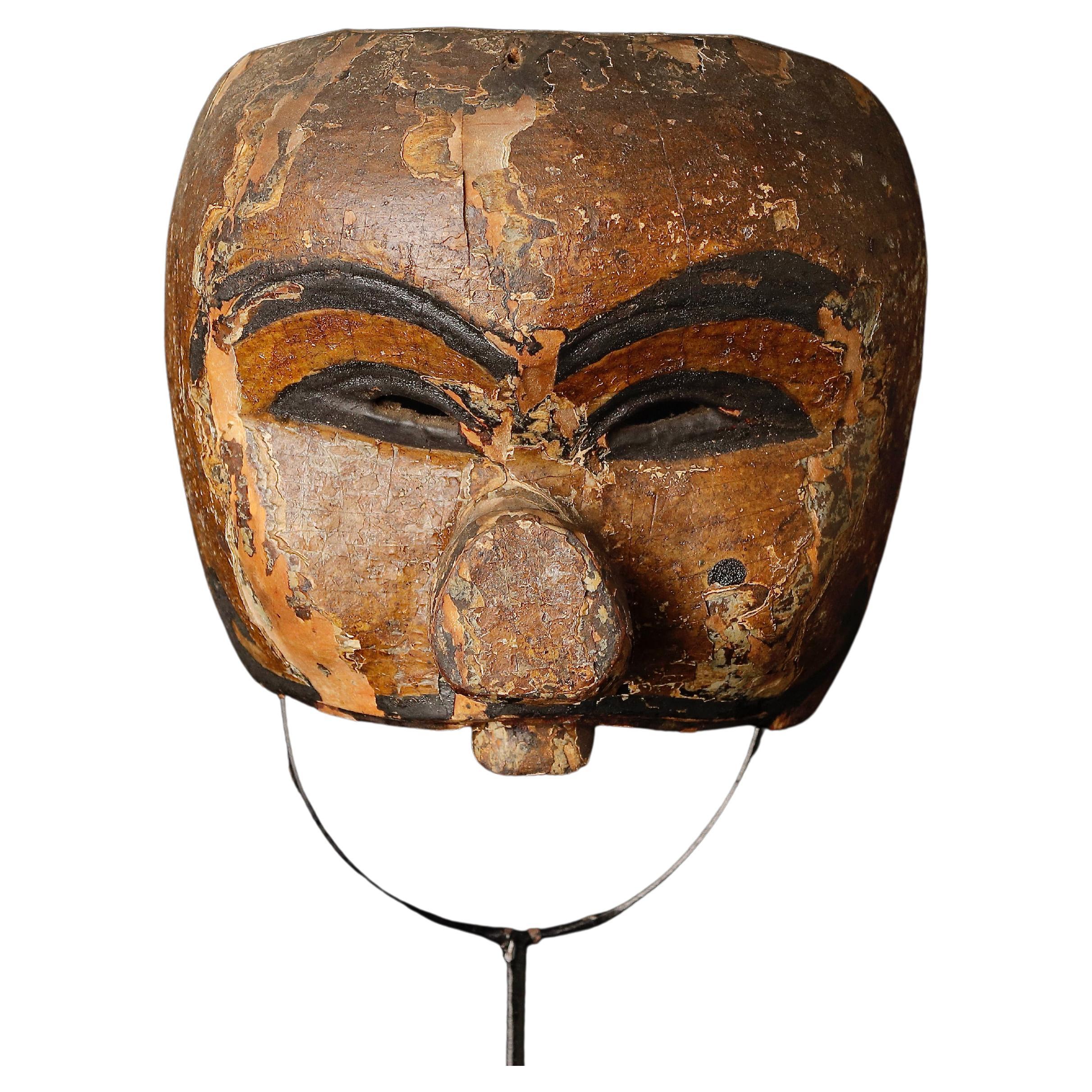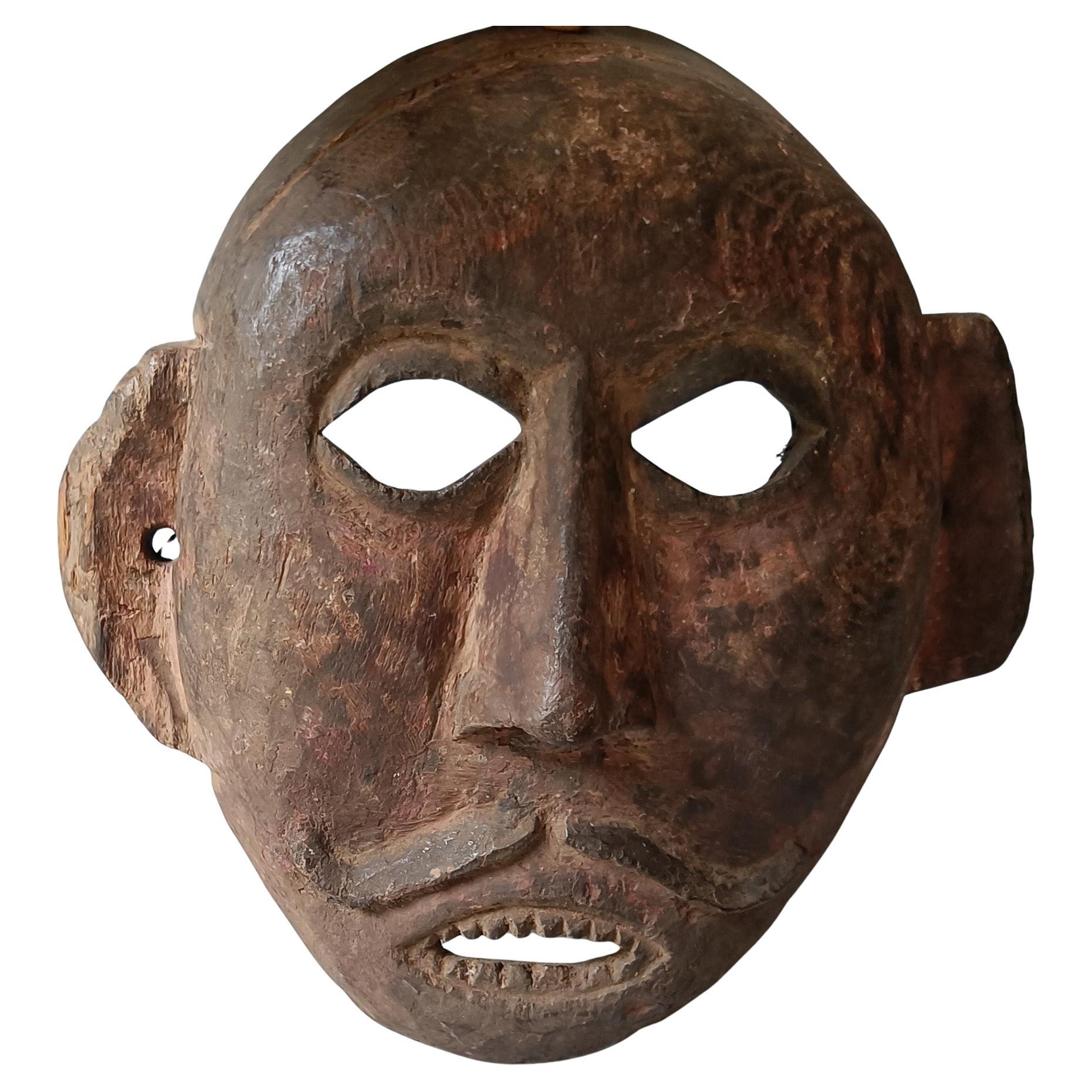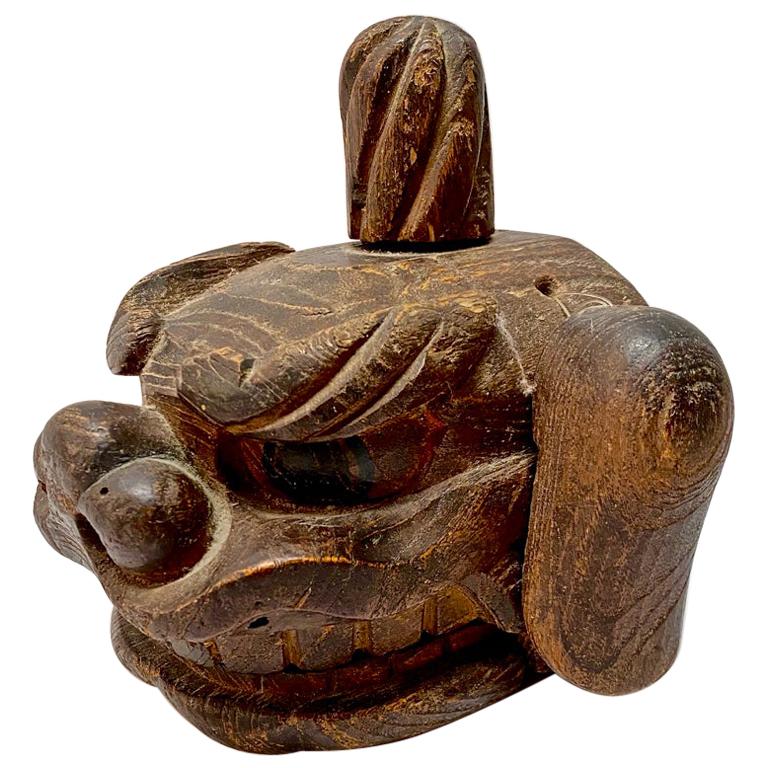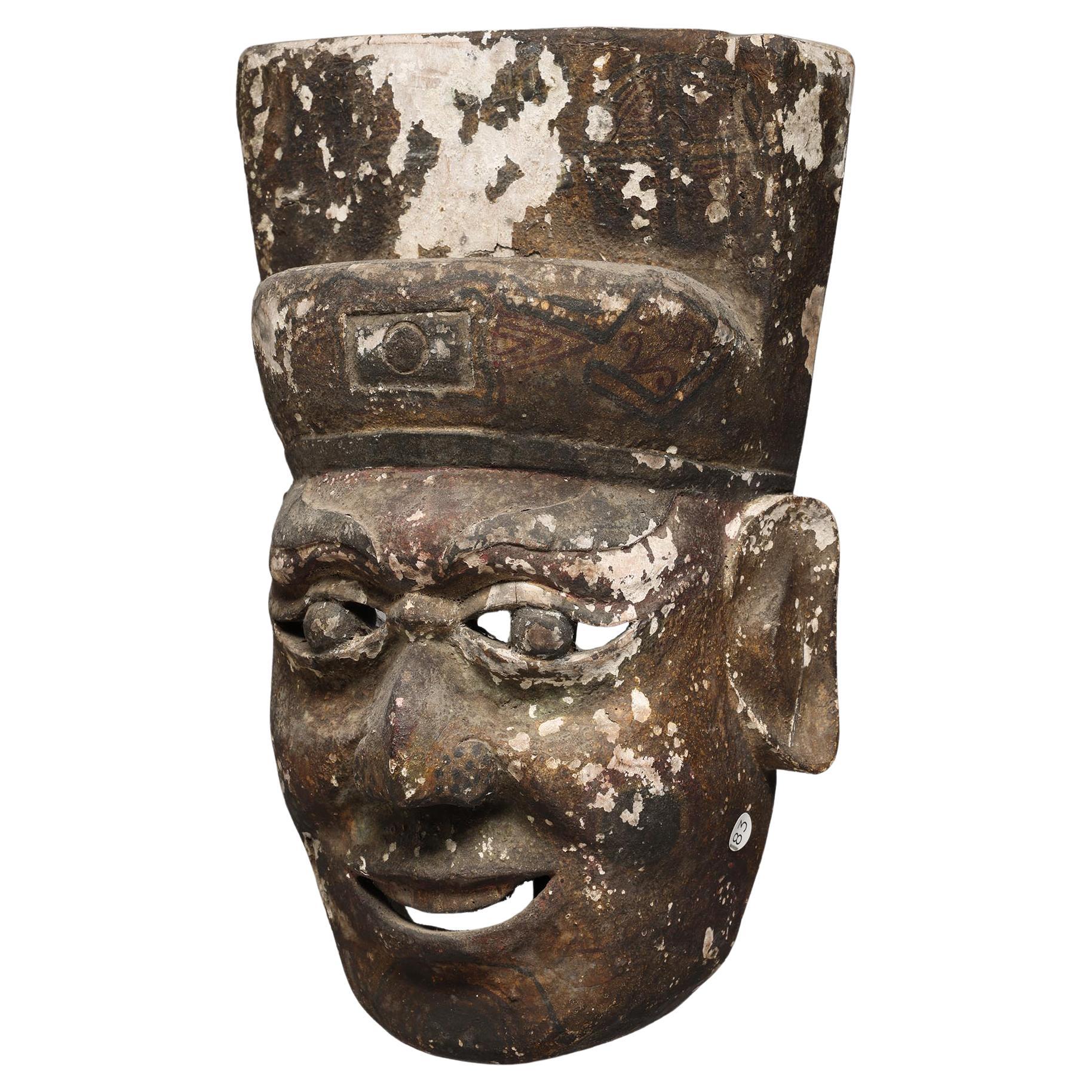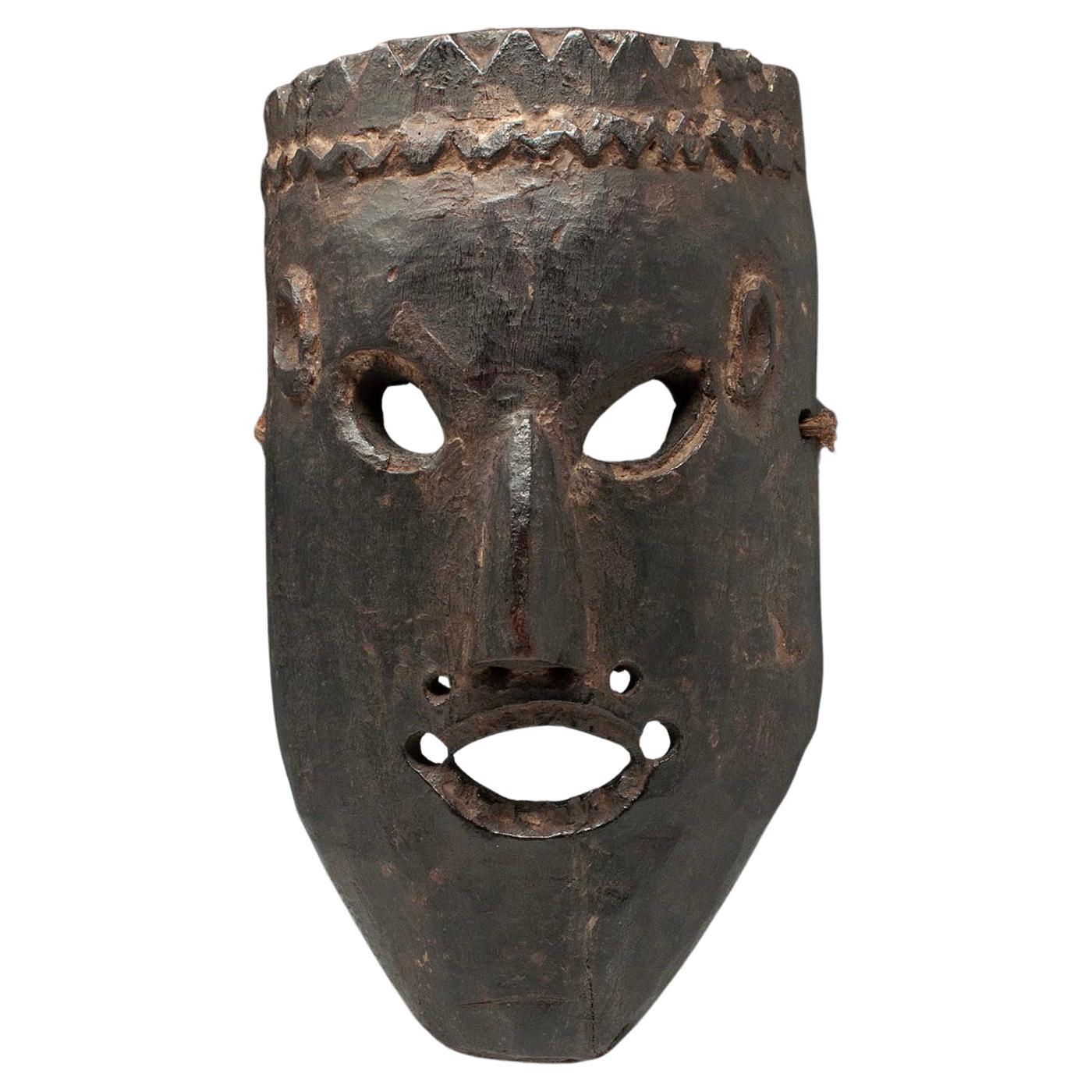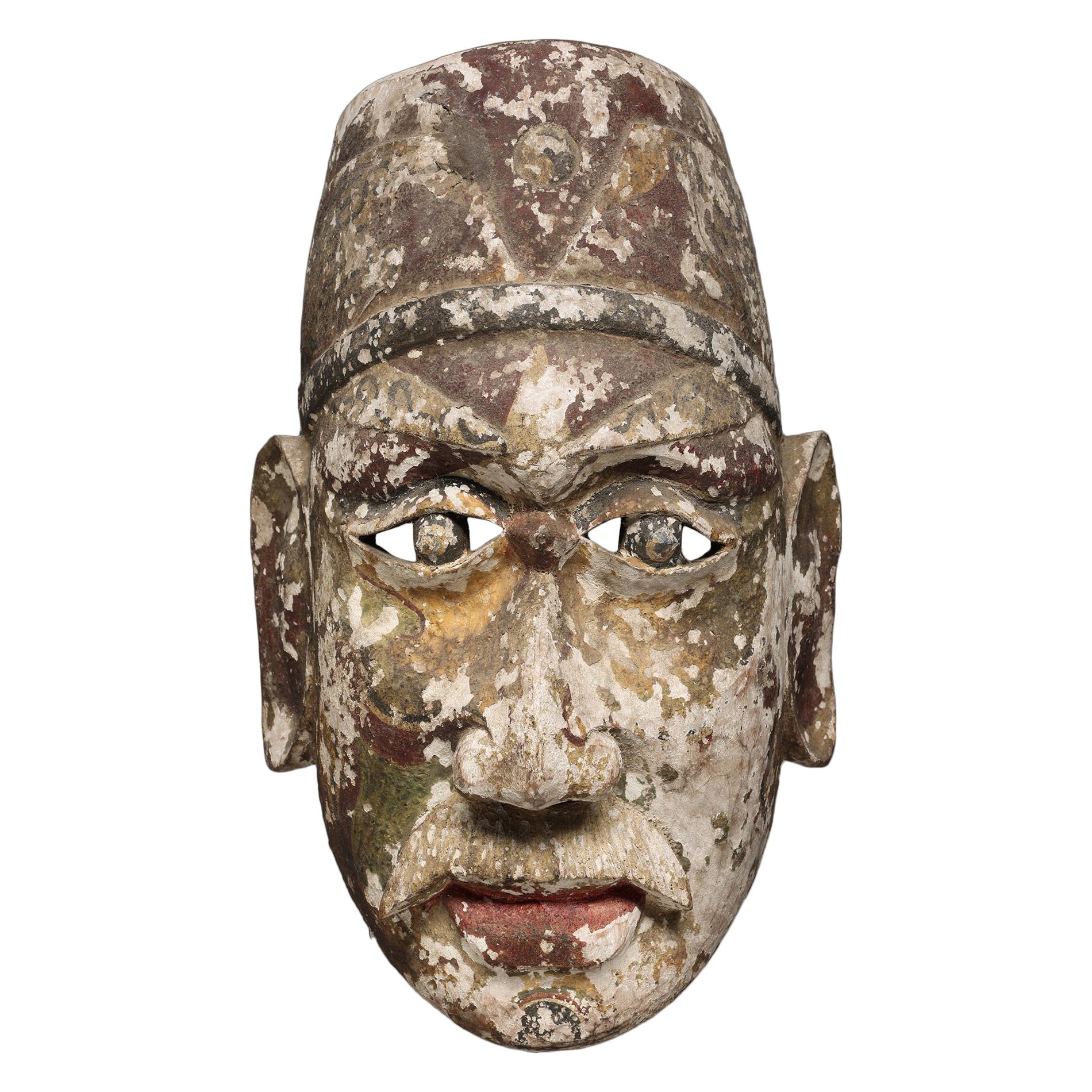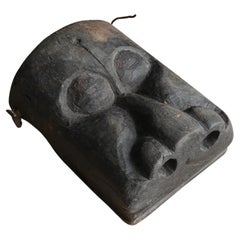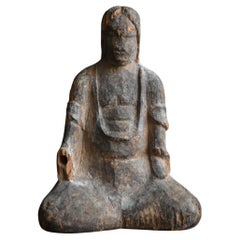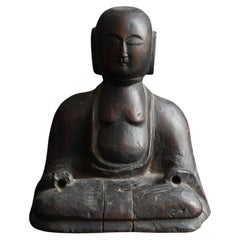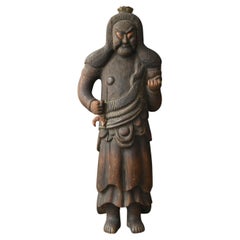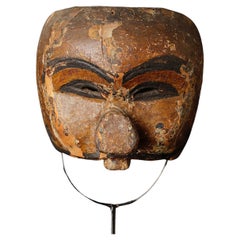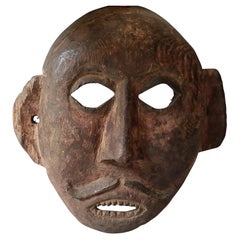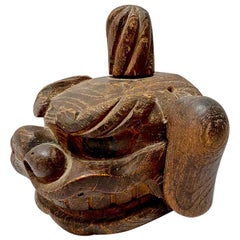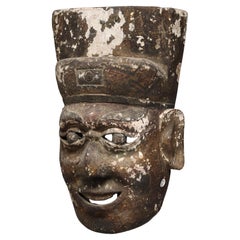Items Similar to Old wooden mask from southern China/lion mask/ritual item//Festival Mask
Want more images or videos?
Request additional images or videos from the seller
1 of 21
Old wooden mask from southern China/lion mask/ritual item//Festival Mask
$1,300
£993.92
€1,144.79
CA$1,821.70
A$2,033.76
CHF 1,065.66
MX$24,895.16
NOK 13,533.86
SEK 12,760.71
DKK 8,543.72
About the Item
Masks have been created around the world since ancient times, deeply connected to the human spirit. Many performing arts involving masks, where the wearer transforms into another being and acts or dances, are closely related to hunting, harvests, or religious rituals. In this way, masks are deeply rooted in human activities, beliefs, and spiritual culture, transcending national and ethnic boundaries as universal expressions of the human heart.
This is a wooden mask made in southern China during the 20th century. In Japan, such masks are commonly called "Shishigashira" (lion heads) and are a traditional type used in lion dance performances. The lion dance has long been performed throughout Japan, China, and East Asia, serving to ward off evil spirits and bring good fortune.
This piece is large and impressive in size, characterized by a sharp and powerful expression. Originally, it may have featured attached hair or a movable lower jaw, but these decorations have been lost over many years. On the back, a horizontal wooden rod runs through, indicating it was held and manipulated by the performer during the dance.
The surface paint was originally brightly colored, but due to aging and flaking, only traces remain on the surface. This weathering imparts a sense of historical depth and dignity, stimulating the viewer’s imagination.
A similar lion head featured in a Japanese art book is noted as having been made in Yunnan Province during the 20th century, so it is highly likely that this piece was also made in Yunnan or its surrounding areas. (A photo is included.) Additionally, a smaller mask of the same type acquired at the same time bore the name of a village in Hunan Province, suggesting this mask could also originate from Hunan. In any case, it is undoubtedly a precious heritage piece rooted in the traditional culture of southern China. A map of China is included, with Yunnan Province circled on the left and Hunan Province on the right, and a red pin marking the village mentioned earlier.
Traditional masks like the Shishigashira reflect the history and spiritual culture of their region, holding value as artistic works that convey universal human emotions. Weighing approximately 4.1 kg, this relatively lightweight piece is especially striking when mounted on a wall. It stands out not only as a collector’s item but also as a unique piece of interior decor. This is a highly recommended piece for those interested in ethnic culture and traditional performing arts.
- Dimensions:Height: 17.52 in (44.5 cm)Width: 16.54 in (42 cm)Depth: 6.7 in (17 cm)
- Style:Other (Of the Period)
- Materials and Techniques:
- Place of Origin:
- Period:
- Date of Manufacture:20th century
- Condition:
- Seller Location:Sammu-shi, JP
- Reference Number:1stDibs: LU5487245434212
About the Seller
5.0
Gold Seller
Premium sellers maintaining a 4.3+ rating and 24-hour response times
Established in 2015
1stDibs seller since 2020
1,604 sales on 1stDibs
Typical response time: 6 hours
- ShippingRetrieving quote...Shipping from: senzoku, Japan
- Return Policy
Authenticity Guarantee
In the unlikely event there’s an issue with an item’s authenticity, contact us within 1 year for a full refund. DetailsMoney-Back Guarantee
If your item is not as described, is damaged in transit, or does not arrive, contact us within 7 days for a full refund. Details24-Hour Cancellation
You have a 24-hour grace period in which to reconsider your purchase, with no questions asked.Vetted Professional Sellers
Our world-class sellers must adhere to strict standards for service and quality, maintaining the integrity of our listings.Price-Match Guarantee
If you find that a seller listed the same item for a lower price elsewhere, we’ll match it.Trusted Global Delivery
Our best-in-class carrier network provides specialized shipping options worldwide, including custom delivery.More From This Seller
View AllJapanese Antique Wooden Lion Mask Engraving Edo Period/1603-1868/Shrine Festival
Located in Sammu-shi, Chiba
This is a very old Japanese "si-si" mask made in the middle to late Edo period.
(Japanese ``si-si'' is an imaginary animal that deifies a lion.)
It is thought that materials such as...
Category
Antique 18th Century Japanese Edo Animal Sculptures
Materials
Wood
Rare Japanese antique wooden god statue /12th century/small wabi-sabi figurines
Located in Sammu-shi, Chiba
I was able to obtain a very rare item.
This is a sculpture of the god ``Shinzo''.
"Shin" = God
"zo" = statue
Since ancient times in Japan, it has been believed that gods reside in all things in the universe, and there have been many shrines.
In the 6th century, Buddhism was introduced and gradually spread throughout Japan.
Around the 8th century, the idea that gods follow the teachings of Buddha spread.
Until the Edo period, God and Buddha became one and the idea of ``Shinto and Buddhism syncretism'' was established.
This statue was created during such a history.
Originally, the image of God was invisible and could not be understood as something tangible.
However, with the introduction of Buddhism to Japan, idol worship was also introduced, and the idea that the gods follow the teachings of Buddha was also propagated at the same time in order to spread the teachings of Buddhism.
Around that time, around the 9th century, the first statues of gods...
Category
Antique 15th Century and Earlier Japanese Other Figurative Sculptures
Materials
Cypress
Japanese antique wood carved Buddha/1800s/late Edo period/folk Buddha
Located in Sammu-shi, Chiba
This is a wooden Jizo Bodhisattva statue made in the late Edo period in Japan.
It is thought that they were not carved by Buddhist sculptors living in central cities such as Kyoto or...
Category
Antique 19th Century Japanese Edo Figurative Sculptures
Materials
Cypress
Japanese antique wooden Buddha statue/Acala/Late Edo period/19th century
Located in Sammu-shi, Chiba
This is a statue of Fudō Myōō (Acala), believed to have been created in Japan during the late Edo period, specifically in the year 1804. On the back, there is an ink inscription that...
Category
Antique 19th Century Japanese Edo Sculptures and Carvings
Materials
Wood
Chinese antique stone engraving of a dragon /Before 20th century/stone tablet
Located in Sammu-shi, Chiba
This is a carved stone slab, probably made in China.
What is represented is probably a dragon.
A dragon with a brave face is carved with two raised eyebrows.
It is thought that it wa...
Category
20th Century Japanese Other Sculptures and Carvings
Materials
Stone
Antique Wooden Sculpture "Kobo Daishi" / Buddha Statues / Edo-Meiji Period
Located in Sammu-shi, Chiba
This is an old Japanese "Kobo Daishi" wooden figure.
"Kobo Daishi" means "Kukai".
"Kukai" was a monk from the early Heian period. His posthumous name was "Kobo Daishi". He is the fou...
Category
Antique 19th Century Japanese Edo Sculptures and Carvings
Materials
Cypress
You May Also Like
Indonesian Ceremonial Performance Mask, 19th Century
Located in Fukuoka, JP
Indonesian ceremonial mask.
Age: 19th century
Size: 15 x11x 14.5cm ( 6 x 4.3 x 5.7inch )
Weight: 314g ( 0.7lb )
Material: wood with paint
Good condition, some abrasions as yo...
Category
Antique 19th Century Indonesian Sculptures and Carvings
Materials
Wood
Nepal Ritual Mask Himalayan Asian art Antiques Tribal masks Interior design
Located in London, GB
Nepal Ritual Mask Himalayan Asian art antiques
A fine old Nepalese ritual mask of Shiva with moustache
Hard dense wood with aged patina and traces of pigments
Height 23 cm
Perio...
Category
Early 20th Century Nepalese Tribal Art
Materials
Wood
Noh Edo Period Lion Mask
Located in Pasadena, CA
This a well-preserved lion mask that dates to the 18th century (possibly earlier). Lion masks were used in the traditional Gion Matsuri festival lion dances...
Category
Antique Early 18th Century Japanese Edo Sculptures and Carvings
Materials
Wood
$3,800 Sale Price
20% Off
Chinese Folk Wood Dance Mask with Smiling Expression Traces of Paint from China
Located in Point Richmond, CA
Carved wood dance mask from China with smiling expression, large square hat or headdress. Traces of many layers of paint, including red, blue, black and white pigments. Darkened pat...
Category
Early 20th Century Chinese Tribal Tribal Art
Materials
Wood
Late 19th-Early 20th Century Tribal Mask, West Nepal
Located in Point Richmond, CA
Late 19th-early 20th century Tribal mask, West Nepal
A mask from West Nepal with slanted almond shaped eyes, very small ears and an oval mouth showing carved upper and lower teeth o...
Category
Antique Late 19th Century Nepalese Tribal Sculptures and Carvings
Materials
Wood
Chinese Folk Wood Dance Mask with Open Eyes Red Lips Traces of Paint China
Located in Point Richmond, CA
Carved hard wood dance mask from China with powerful expression, open eyes. Traces of many layers of paint, including red green black and white pigments.
Ex- private collection in C...
Category
Early 20th Century Chinese Tribal Tribal Art
Materials
Wood
